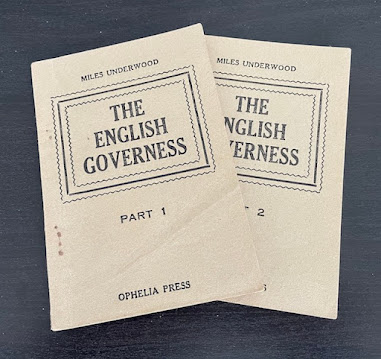In Quest of Splendour [Pierre le magnifique]
Roger Lemelin [trans. Harry Lorin Binsse]
Toronto: McClelland & Stewart, 1955
Roger Lemelin's first three novels were published within five years of each other.
Au pied de la pente douce (
The Town Below), his 1947 debut, was a bestseller. The following year,
Les Plouffes (
The Plouffe Family) achieved even greater sales, and then went on to became
the country's first hit television series. Lemelin's third,
Pierre le magnifique didn't fare so well.
The dust jacket of this lonely printing of the English translation depicts the author in repose. I expect Lemelin was deep in thought, though it is hard not to see him as defeated. Long dead critics thought little of
Pierre le magnifique, and weren't all that excited by its translation. The Americans, who had published English-language editions of Lemelin's first two novels, took a pass. It would be three decades before he wrote another novel... and that work,
Le crime d'Ovide Plouffe (
The Crime of Ovide Plouffe), wasn't very good.
In Quest of Splendour is a very good novel. My greatest quibble has to do with its title, but this is the translator's fault;
Pierre le magnifique is much better.
Pierre is Pierre Boisjoly, the nineteen-year-old son of a widowed charwoman. Highly gifted and somewhat handsome, he has benefitted from a good education thanks to the patronage of Father Loupret who sees the makings of a cardinal in Pierre. The young man is certainly on the right path, but on the very day of his graduation from Quebec's Petit Séminaire he's thrown off-course by a brief encounter with another young man.
It's not what you think.
Through that young man – name: Denis Boucher – Pierre meets Fernande, whose features are "exactly those of the girl who for years had slept in the depths of his senses." Such is her beauty that the student has no choice but to abandon all plans for the priesthood. That evening, having informed Father Loupret of his decision, he visits Denis and Fernande in their small bohemian flat. Pierre has his first sip of beer and, lips loosened, lets slip that his mother spotted an envelope stuffed with cash while cleaning the home of Yvon Letellier, his wealthy Petit Séminaire rival. Intent on stealing the money so as to pay for his new friend's education, Denis dashes off to the Letellier's. Pierre sets off to stop him. The pair meet up at the house, struggle, and accidentally knock over Yvon's grandmother. She dies on the spot.
 |
| The Globe & Mail, 19 November 1955 |
No one sees the death as at all suspicious – she
was old and frail – but Pierre flees the city just the same. He isn't so much running away from the law, but his future past as a Catholic priest. The young man ends up in a lumber camp, where he is exposed to Marxism. Pierre sides with the camp's owner, only to find that he has cast his lot with a violent, unstable drunk who hires prostitutes for the pleasure of beating them. Upon his return to Quebec City, he finds that liberal Father Lippé, the teacher he held above all others, has been placed in a mental institution. The priest's mistake was to enrol in independent sociology classes taught by European schooled Father Martel (read:
Georges-Henri Lévesque).
Forget the old lady's death, it's here in the second of the novel's three parts that things become really interesting. Lemelin's
The Town Below surprised this reader, born in the early years of the Quiet Revolution, with its mockery of the Catholic Church.
In Quest of Splendour goes much farther. Here the Church is depicted as corrupt, punitive and insincere, working with the provincial government to suppress dissent and education. Quebec's Attorney General, who happens to be Yvon's uncle, plays the Communists, enlisting them to smear while targeting moderate liberals for acts of violence. Of course, in real life – our world – the position of Attorney General was not held by Yvon's uncle but by Premier Maurice Duplessis.
Students of history will recognize the risk.
In Quest of Splendour is as ambitious as it is bold; a brave work by a man who had everything to lose in its writing. Is it really so surprising that reviews in Duplessis' Quebec were lacklustre?
Lemelin's least known novel, it is his best.
About the author:
 |
| (cliquez pour agrandir) |
Object: Two hundred and eighty-eight dense pages bound in dull grey boards with burgundy print. Sadly, the jacket illustration is uncredited. I purchased my copy twenty-eight years ago in Montreal. Price: two dollars.
Access: Pierre le magnifique is in print from Stanké. Price: $13.95. The scarcity of the original, published in 1952 by the Institut littéraire du Québec, is a reflection of its failure in the marketplace.
Harry Lorin Binsse's translation also fared poorly. The McClelland & Stewart was followed the next year by a British edition published by Arthur Baker. As far as I can determine, neither enjoyed more than one a single printing.
Very Good copies of the Canadian edition are being sold online for as little as US$6.50; the British, which shares the same jacket, will set you back just a touch more. At 875 rupees and change, India's Gyan Books offers a print on demand version. Pay no heed, I am certain they're breaking copyright.
An Ontario bookseller offers signed copies of both the Institut littéraire du Québec and McClelland & Stewart editions at US$35 each. Trust me, they're worth it.
Related posts:
































